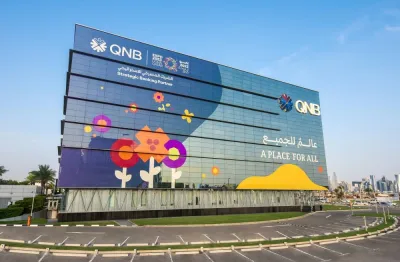China’s economy is holding up despite the recent crash in the stock market, which has fallen 27% from its peak on June 8. Second quarter real GDP growth was released on July 15 at 7.0%, above consensus of 6.8% and in line with the government target of around 7.0% for 2015, according to a QNB report .
Other economic data has also been positive. Retail sales and industrial production year-on-year growth numbers both picked up in June having slowed earlier in the year. Furthermore, property markets have turned a corner with average prices for new residential buildings in 70 cities rising in both May and June, the first time they have risen since April 2014.
The solid economic performance has been enabled by a number of government monetary and fiscal stimulus measures. The People’s Bank of China (PBoC) has repeatedly cut both policy interest rates and the Reserve Requirement Ratio (RRR) for banks.
Since November 2014, the PBoC has cut interest rates four times. The lending rate was reduced from 6.0% to 4.85% currently and the deposit rate from 3.0% to 2.0%. The RRR was also cut three times, since February 2015 from 20% to 18.5% currently.
The PBoC has also injected liquidity into banks, expanded lending facilities to banks, and introduced a $323bn debt swap programme for local governments to alleviate their debt burden. These measures have bolstered bank lending, supporting the economy, says QNB report.
The government has also helped boost growth through fiscal stimulus, announcing a steady stream of new transport projects. For example, the government has prioritised railway investment, which reached $43bn in the first half of 2015, up 12.7% compared with 2014.
Nonetheless, a number of downside risks remain. First, there is considerable excess capacity in the economy, which is associated with high levels of debt in local government and corporate sectors. Investment spending growth has, therefore, trended downward, reaching 11.4% in the year to end June 2015 from 15.7% to end January 2014.
Second, disappointing purchasing manager’s index data released last week (48.2 compared with consensus of 49.7) has increased concerns about growth. Finally, stock market volatility could have repercussions in the real economy. The recent rise in onshore Chinese equity markets (up 151% in the year to June 15) was followed by a sharp correction (down 28.0% since mid-June). This volatility could undermine financial stability and erode consumer confidence, the report added.
To counteract these downside risks, the government is likely to provide more stimulus to the economy during the second half of the year for a number of reasons.
First, it is likely to be needed to meet the growth target of around 7%. Second, the authorities have demonstrated the commitment and capacity to support the economy. Third, with almost $4tn in international reserves, the authorities have plentiful resources at their disposal to provide substantial stimulus. Finally, inflation is currently 1.4%, well below the target of around 3.0%, leaving plenty of room for monetary stimulus.
Therefore, additional RRR and interest rate cuts, as well as an expanded local government debt swap plan and more fiscal stimulus measures can all be expected during the second half of the year.
Additionally, the government has introduced a number of measures to directly support the stock market. The PBoC has said it will provide ample liquidity to the stock market to ensure no systemic risks, says QNB report.
For example, it has provided liquidity support and a $12bn capital injection to a state-run securities company, the Chinese Security Fund, which invested $32bn in equity funds on July 8 alone.
Other measures include providing at least $200bn of liquidity to brokerages, halting initial public offerings, and encouraging government organisations to buy shares, including state insurance and pension funds, as well as state-owned-enterprises. With such strong support for both the economy and the stock market, we still expect China to meet its growth target of around 7% in 2015 despite the downside risks, the QNB report said.



